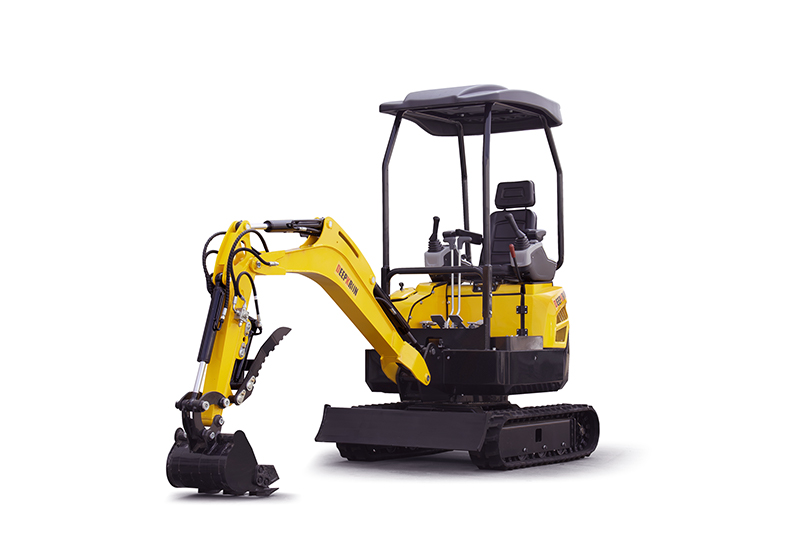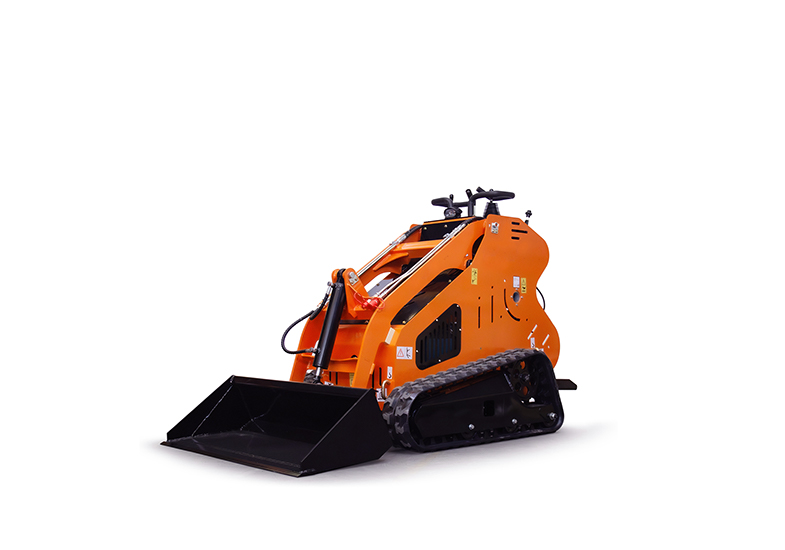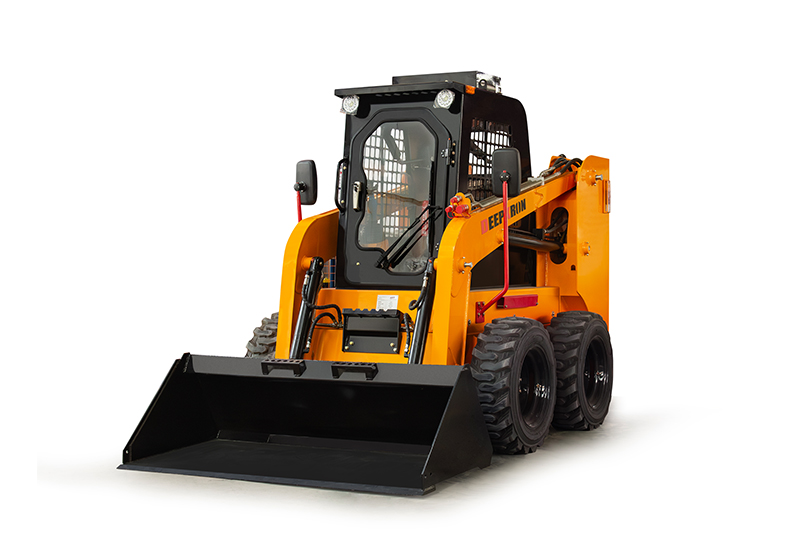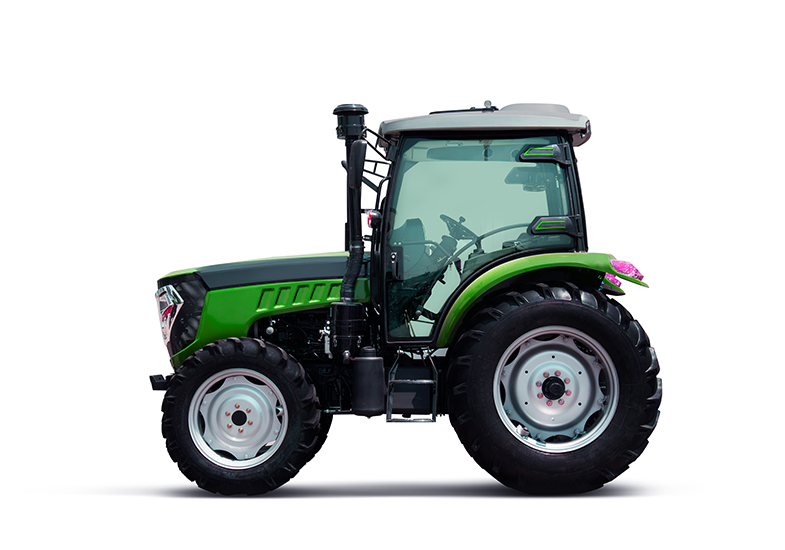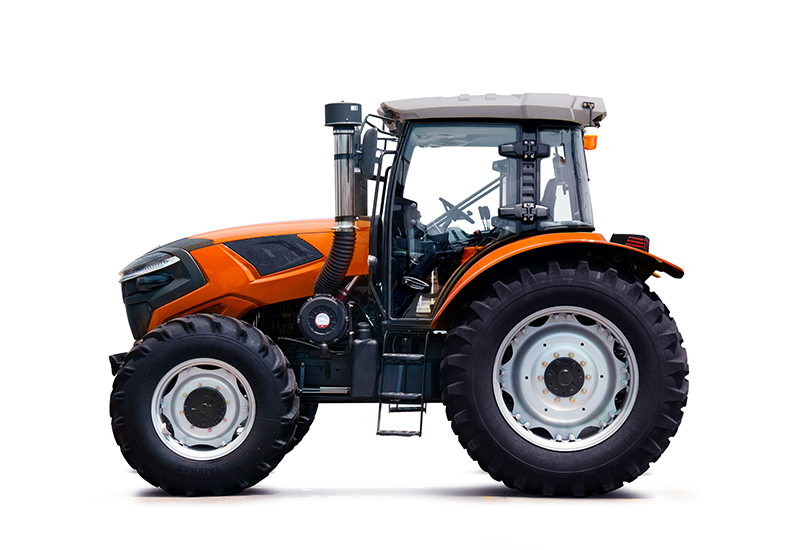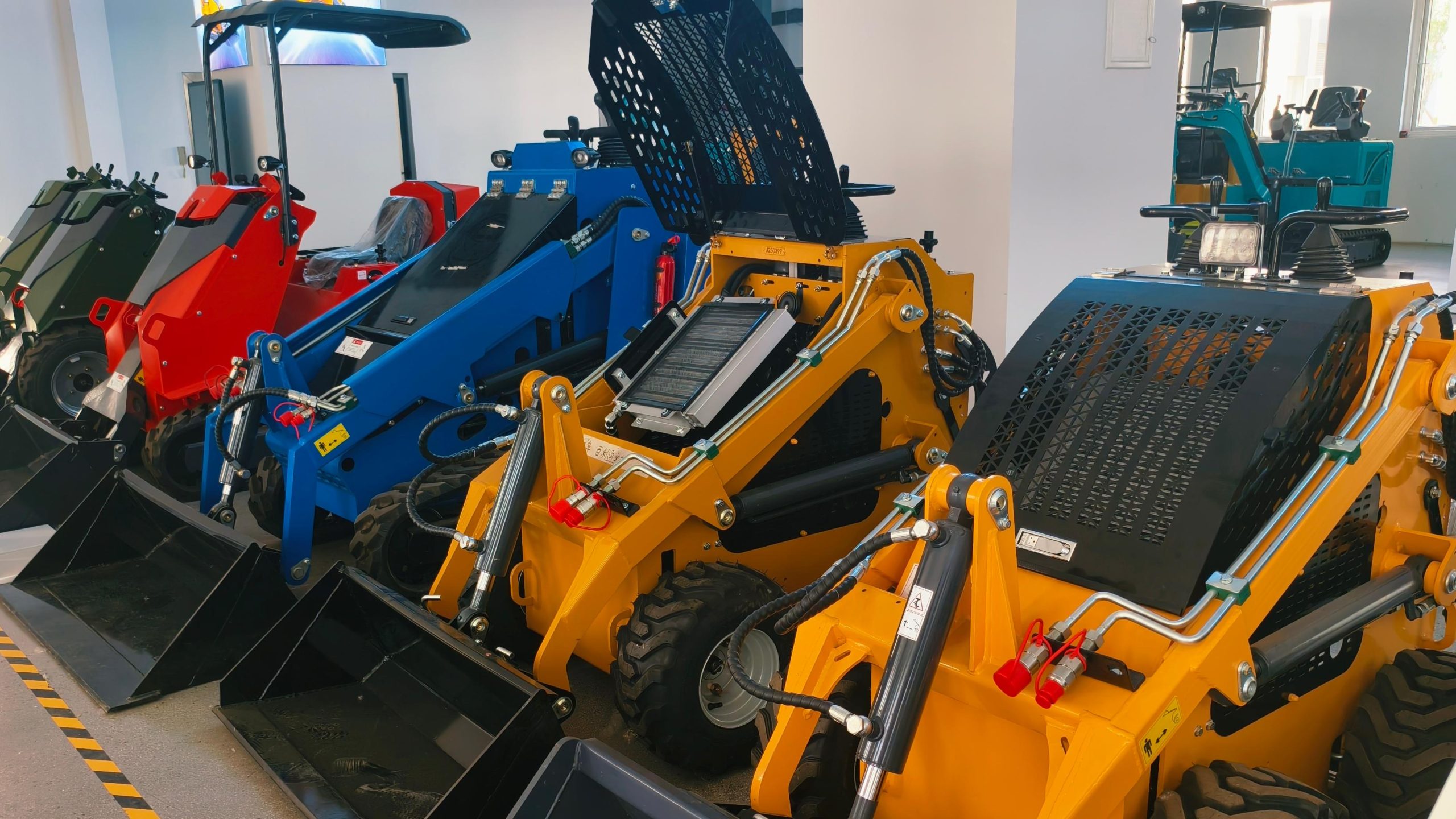Clearing a property with lots of plants in summer can feel hard, but using a mini track loader makes it simple. You get speed, power, and can move around easily to clear thick brush fast. Machines like the DeepKron S45 Compact Skid Steer, DeepKron A50 Compact Track Loader, and DeepKron W65 Compact Skid Steer can do tough work easily. Your messy property will look neat and open very quickly.
Key Takeaways
Mini track loaders can move easily and have strong power. They help clear thick brush fast, even in small or soft spots. – Picking the best attachment, like a brush cutter or mulcher, makes clearing land easier. It also helps you work faster. – Plan your work well and get the area ready before you start. This keeps you safe and helps you finish sooner. – Always wear the right safety gear and follow safe steps. This keeps you and others safe. – Clearing land the right way helps the environment. It stops soil from getting hurt and keeps your land healthy.
Why a Mini Track Loader
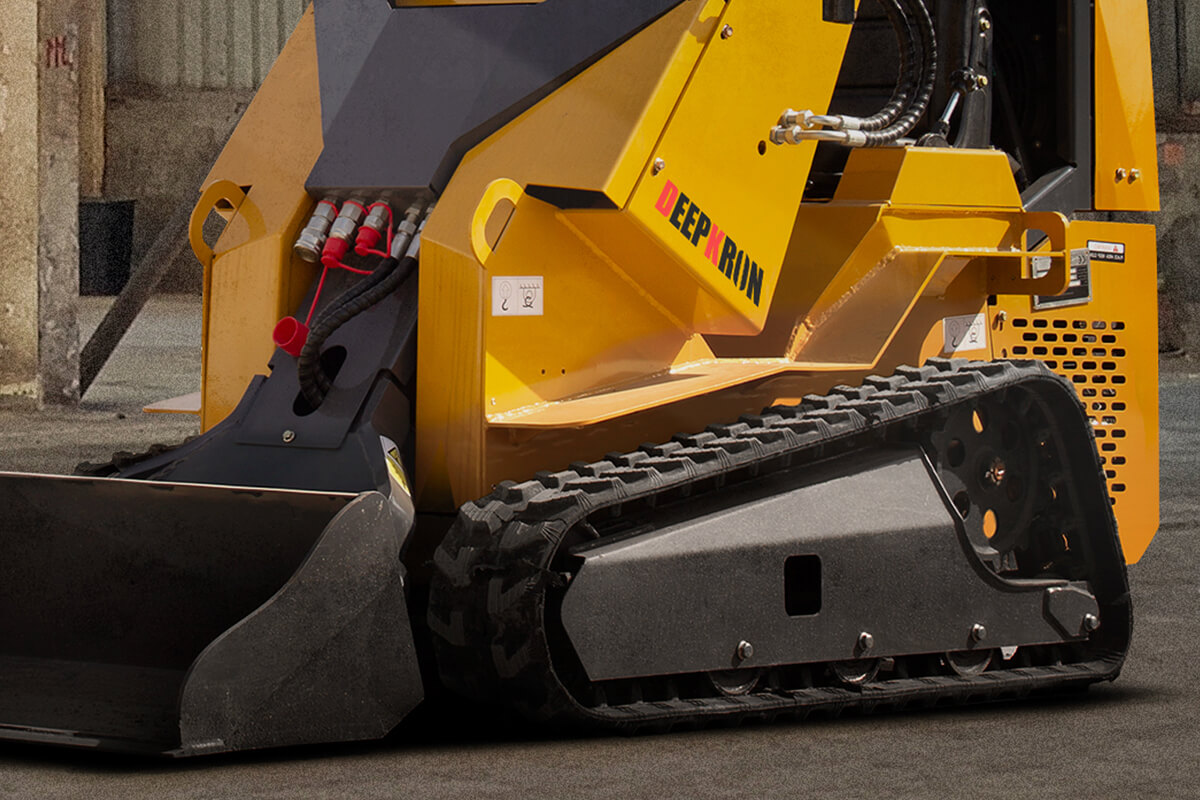
Maneuverability
When you need to clear dense brush, you want a machine that can move easily in tight spots. A mini track loader gives you that edge. Its compact size lets you slip between trees, around rocks, and into corners where bigger machines just can’t go. You’ll notice how much easier it is to work in small backyards or on uneven ground. The tracks spread out the weight, so you don’t tear up your lawn or leave deep ruts.
Compared to a skid-steer, a mini track loader offers a turning radius that’s tighter than most compact wheel loaders. While a skid-steer can spin in place, the mini track loader still turns sharply and handles soft or muddy ground better. You get the best of both worlds—great maneuverability and less damage to your property.
Tip: If you’re working near fences or garden beds, the mini track loader’s precise controls help you avoid accidents.
Power and Efficiency
You might think a small machine means less power, but that’s not true here. The DK300 mini track loader packs a 13.5HP EPA-friendly engine, giving you plenty of muscle for tough jobs. You can lift, push, and clear heavy brush without breaking a sweat. The hydraulic system lets you use all kinds of attachments, from brush cutters to mulchers, so you can tackle different tasks with one machine.
Experts say that track loaders like this one offer quickness and versatility. They cost less than huge mulching tractors but still deliver strong performance. You save money and get the job done faster. The table below shows how mini track loaders stack up in horsepower and lifting power:
Discover the DK300 Mini Track Loader
Explore the powerful and versatile DK300 Mini Track Loader designed for tough jobs and tight spaces.
Model | Horsepower (hp) | Rated Operating Capacity (lbs) | Notes |
|---|---|---|---|
Wacker Neuson SM120 | 24.7 | 1,226 | Low ground pressure, gentle on turf |
Bobcat MT100 | 24.8 | 1,000 | Versatile attachments |
DK360 | 13.5 | — | EPA-friendly, compact size |
You’ll find that a mini track loader works well on soft ground, sand, or slopes. It keeps moving when a skid-steer might get stuck. The ability to swap attachments means you can clear brush, move dirt, or even haul logs—all with one machine.
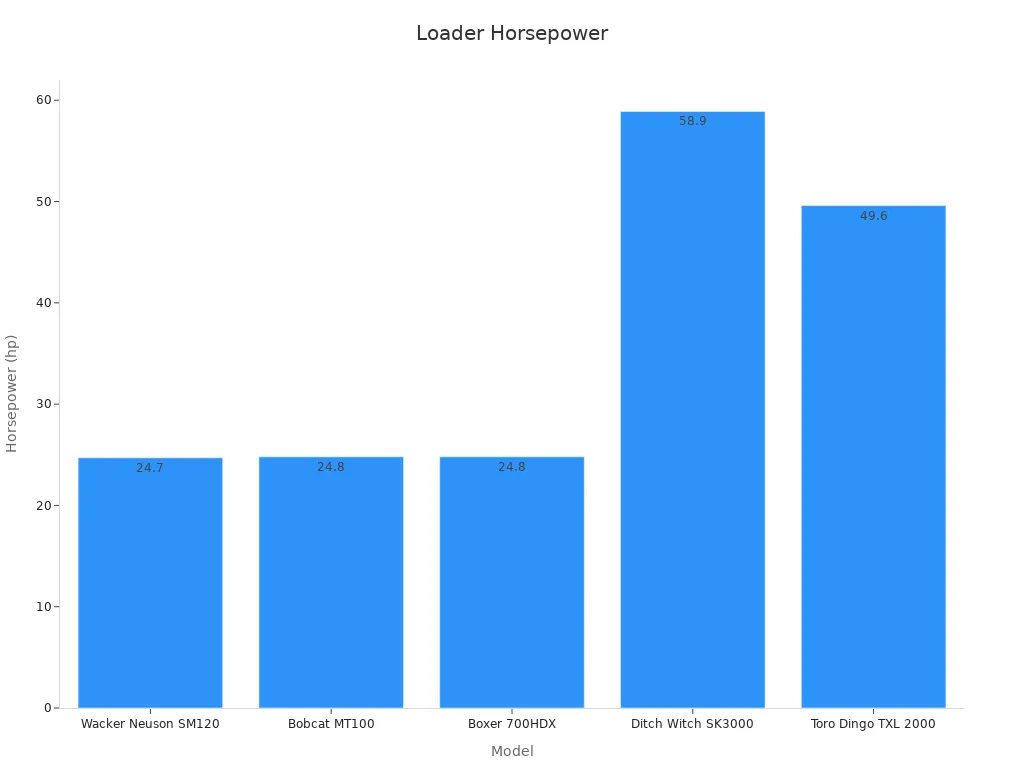
With user-friendly controls, even if you’re new to land clearing, you’ll feel confident running a mini track loader or a skid-steer. Both professionals and beginners can get great results.
Land Clearing Attachments
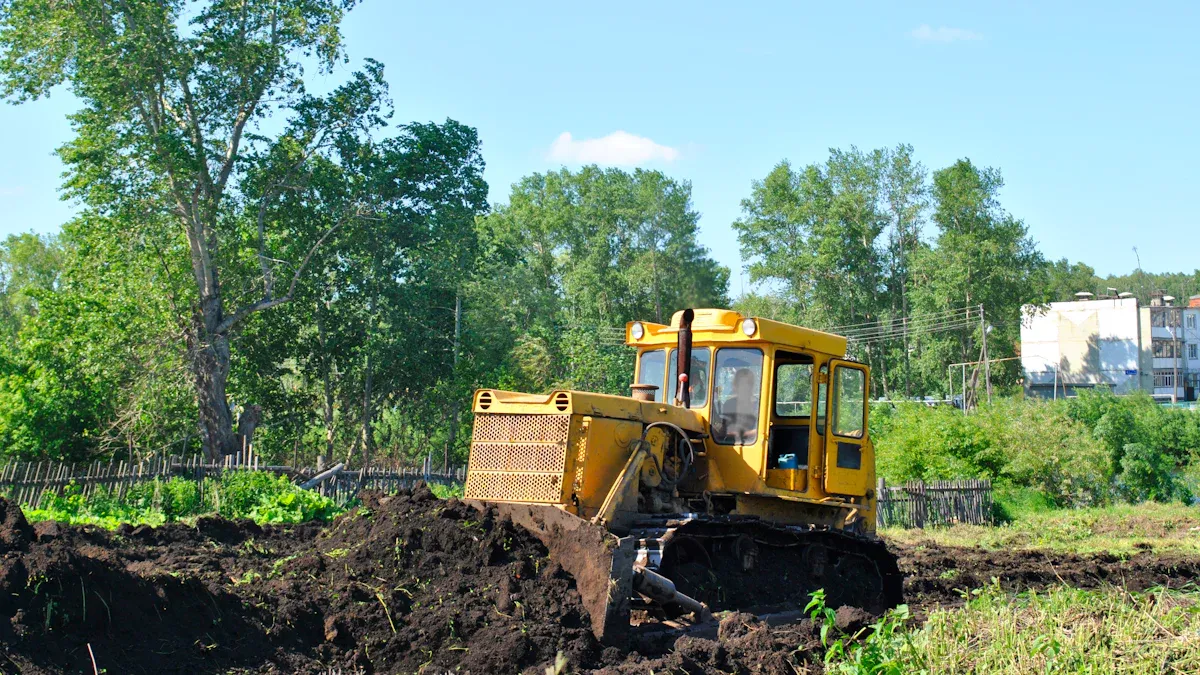
When you start a land clearing project in summer, the right attachment makes all the difference. Mini track loaders like the DK360 work best when you match them with the right tools. Let’s look at the top choices for clearing dense brush.
Brush Cutter
A brush cutter attachment turns your mini track loader into a mowing powerhouse. You can slice through thick grass, weeds, and even small saplings. Rotary cutters, like the Brushcat, handle vegetation up to 2 inches in diameter. They work well in tight areas and follow the ground’s shape, so you get a clean cut even on slopes. Skid shoes and rear rollers help protect the ground and block flying debris.
Here’s a quick look at how a brush cutter performs:
Performance Metric | Flat Field | Sloped Field | Additional Details |
|---|---|---|---|
Average Cutting Rate | 26.23 m²/min | Consistent high-quality cutting and mulching | |
Energy Consumption | 0.269 kWh/h | 0.292 kWh/h | 8% higher power demand on uneven terrain |
Sound Level at 50% Capacity | 67.3 dB | N/A | Quieter than conventional mowing equipment |
Sound Level at 75% Capacity | 74.3 dB | N/A | |
Sound Level at 100% Capacity | 76.2 dB | N/A | |
Average Input Power | 281.3 W | N/A |
Tip: Brush cutters designed for mini track loaders give you precision and speed, making land clearing much easier.
Mulcher
If you need to tackle thicker brush or small trees, a mulcher attachment is your best friend. Mulchers use heavy-duty teeth to grind wood up to 8 inches thick. You can clear about 3 acres of brush, bramble, and saplings in a single workday on level ground. Newer mulcher designs boost productivity by up to 40%, so you finish land clearing jobs faster and with less effort. Well-maintained mulchers also keep downtime low and help you save money.
Note: Mulchers turn dense brush into mulch, so you spend less time hauling debris and more time enjoying your cleared space.
Other Tools
You have even more options for land clearing with a mini track loader. Here are some handy attachments:
Grapple buckets help you pick up and move logs or piles of brush.
Tilt swing tools let you grade slopes without moving the loader over and over.
Forestry kits add extra safety, like protective windows and fire extinguishers.
Mini track loaders and skid-steer machines work well in tight or sensitive areas. Rubber tracks protect the ground, so you can clear land on golf courses or wetlands without worry. With the right attachment, you can handle almost any land clearing challenge.
Step-by-Step Land Clearing
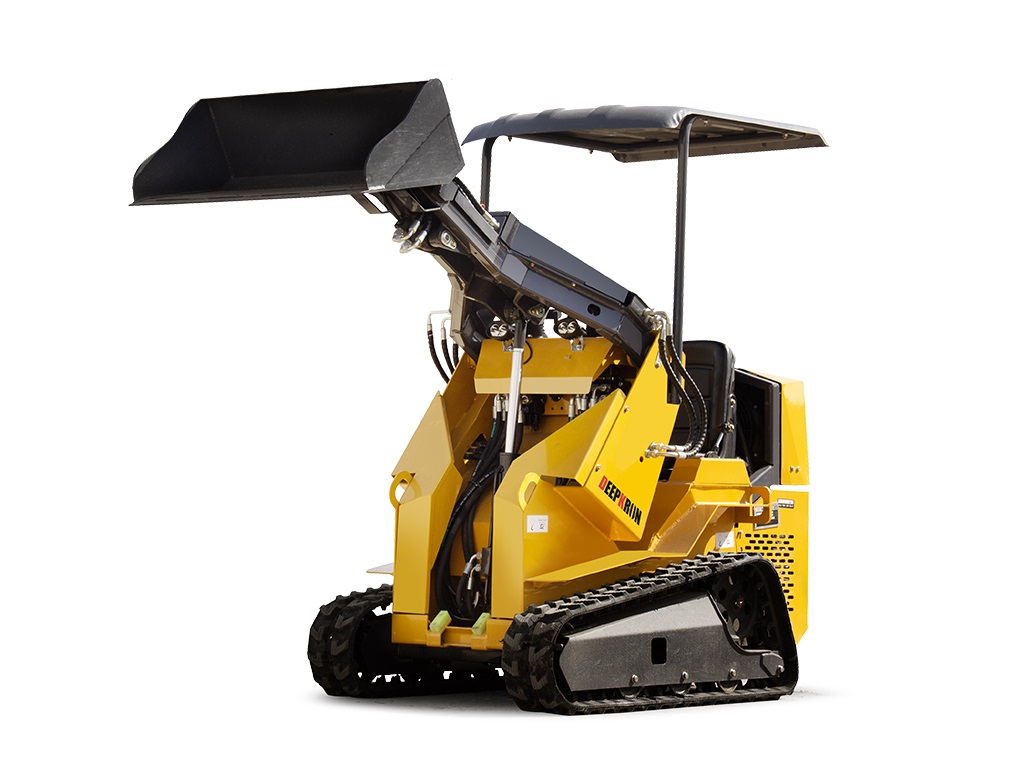
Assess and Plan
Before you start any land clearing job, take time to look over your property and make a plan. Walk around and spot any big trees, rocks, or wet spots. Think about what you want the area to look like when you finish. Do you want a clean field, a garden, or just less brush? Write down your goals.
You should also check for any rules or permits you need. Some places have strict laws about clearing land, especially if you are near water or protected areas. Make sure you follow all safety and environmental rules. If you work with a team, talk about everyone’s job and set a timeline.
Here’s a quick table to help you remember the main steps in planning:
Step | What to Do |
|---|---|
Walk the Property | Look for hazards, wet spots, and big obstacles |
Set Your Goals | Decide what you want the land to look like |
Check Regulations | Find out if you need permits or must follow special rules |
Make a Timeline | Plan when each part of the job will happen |
Assign Tasks | Make sure everyone knows what to do |
The land clearing attachment market is growing at 7.4% each year, showing that more people are finding success with careful planning and the right tools.
Attach Equipment
Now it’s time to get your mini track loader ready. Pick the right attachment for your job. For thick brush, use a brush cutter. For small trees or heavy brush, a mulcher works best. Always read the manual for your loader and attachment.
Follow these steps to attach your equipment safely:
Park your loader on flat ground and turn it off.
Line up the attachment with the loader’s mounting plate.
Lock the attachment in place using the loader’s quick-attach system.
Check that all pins and locks are secure.
Adjust chain tension so it hangs about 1.5 to 2 inches from the boom. This keeps the chain from wearing out too fast.
Match the teeth or blades to the ground type. Use tougher teeth for rocky soil and softer ones for dirt.
Grease and oil all moving parts before you start.
Always wear gloves and safety glasses when working with attachments. Double-check everything before you turn the loader back on.
Prepare Area
Getting the area ready makes your job safer and faster. Start by removing big rocks, trash, or anything that could damage your equipment. If you see any power lines or pipes, mark them so you don’t hit them later.
Test the soil to make sure it can support your loader.
Work with experts like engineers if you have steep slopes or soft ground.
Plan for drainage so water does not pool up after you clear the brush.
Level out bumpy spots to keep your loader steady.
Set up dust control if it’s dry and windy.
Good prep work keeps you safe and helps your mini track loader run smoothly. You also protect the environment by stopping erosion and keeping water clean.
Operate Loader
Now you’re ready to clear that overgrown property! Start your mini track loader and move slowly at first. Use the controls to steer around trees and rocks. Keep the attachment low to the ground for the best cut.
Move in straight lines to cover the area evenly.
Overlap each pass a little so you don’t miss any brush.
Watch for stumps or holes that could tip your loader.
If you use a mulcher, let it grind up the brush before moving forward.
A mini track loader can run up to 10 hours without refueling, so you can work longer without stopping. The cab-forward design gives you a clear view, making it easier to spot obstacles and stay safe. You’ll notice up to 15% more productivity with vertical lift models, and if you use a laser-guided grader, you can finish grading up to 70% faster.
Aspect | Benefit |
|---|---|
Long Operating Time | Up to 10 hours without refueling |
Better Visibility | Cab-forward design for safer operation |
Productivity Boost | 15% more with vertical lift path |
Grading Efficiency | 70% faster with laser-guided graders |
Take breaks when you need them. Stay alert and keep an eye on your surroundings.
Handle Obstacles
You will run into tough spots during land clearing. Maybe you find a big stump, a pile of rocks, or a muddy patch. Don’t rush. Use your loader’s attachments to move or break up obstacles.
Use a grapple bucket to pick up logs or rocks.
For muddy areas, go slow and use the loader’s tracks for better grip.
If you hit a stump, use the mulcher or a stump grinder attachment.
Always check for hidden pipes or wires before digging.
If you get stuck, back up slowly and try a different angle. The mini track loader’s low ground pressure helps you avoid getting bogged down.
Stay calm and patient. Most problems have a simple fix if you use the right tool.
Clean Up
When you finish clearing, take time to clean up the site. Pick up leftover branches, rocks, and trash. Use the loader to move piles to a compost area or dumpster. If you mulched the brush, spread the mulch evenly to help the soil.
Check the area for any missed spots.
Inspect your loader and attachments for damage.
Grease and clean all moving parts before storing the equipment.
Make sure you leave the site safe and tidy.
A clean site looks great and keeps everyone safe. Good cleanup also means your equipment will last longer.
Safety Tips
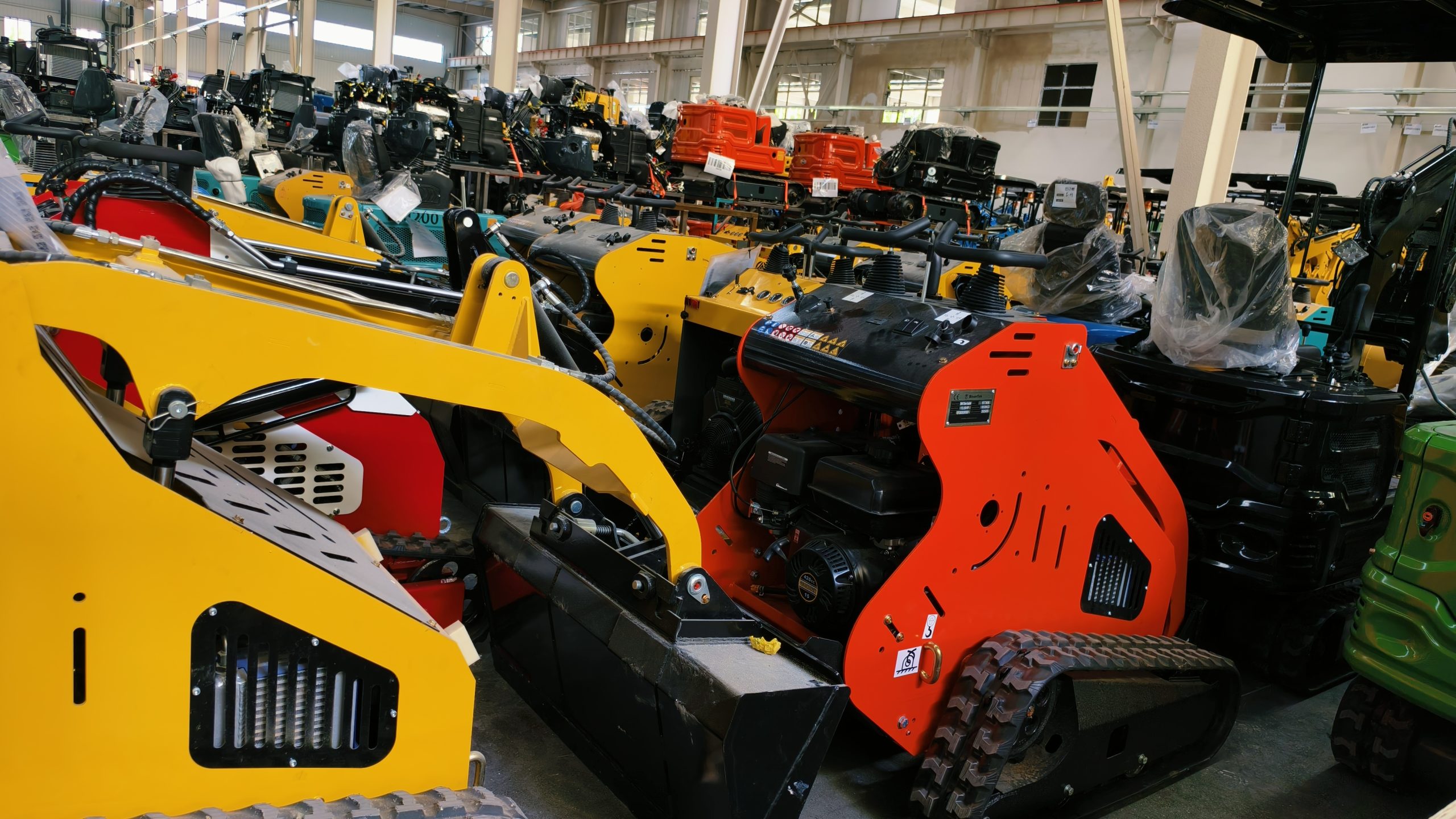
Personal Protection
You want to stay safe while working with heavy equipment. Always wear the right personal protective equipment (PPE). Hard hats protect your head from falling branches or debris. Safety glasses keep dust and wood chips out of your eyes. Hearing protection helps you avoid loud noise from machines. Cut-resistant chaps can save your legs if you use a chainsaw. Gloves and sturdy boots protect your hands and feet.
Every year, thousands of people get hurt using chainsaws. Most injuries happen to the left thigh and hand. Wearing chaps and gloves can stop many of these accidents. Hard hats and eye protection also lower your risk. You should never skip PPE, even for small jobs.
Tip: Put on your safety gear before you start. It only takes a minute, but it can save you from serious injury.
Safe Operation
You need to know your machine before you start. Read the operator’s manual and learn how your mini track loader works. Check the tires, tracks, and hydraulic lines for damage. Make sure all attachments are locked in place. Test everything before you move.
Keep three points of contact when you get in or out of the loader.
Only one person should be in the cab at a time.
Drive on flat, stable ground. Avoid sharp turns and sudden stops.
Keep loads low and balanced, especially on hills.
Shut off the engine and take out the key before leaving the loader.
Do daily checks and fix any problems right away.
Stay alert and watch your surroundings. Training and practice help you work safely every time.
Environmental Care
You can help protect the land while you clear it. Try to keep as much natural vegetation as possible. This helps stop soil erosion and keeps the ground healthy. The United Nations warns that up to 90% of the world’s topsoil could disappear by 2050. Most of this loss comes from poor land management. When you clear land, avoid using too many chemicals. Chemicals can harm the soil and water.
Leave some trees and plants to protect wildlife.
Use mulch from brush to cover bare soil.
Plan your work to prevent water from washing away dirt.
Avoid clearing land when it is very wet or windy.
Good land clearing practices protect the soil and keep your property healthy for years to come.
You now know how to clear dense brush quickly and safely. Start with a plan, pick the right attachment, and use your mini track loader to handle tough spots. You get fast results and a cleaner property. Follow these steps, and you will see how easy land clearing can be. If you want a tool that works hard for you, consider the DK360 for your next project.
FAQ
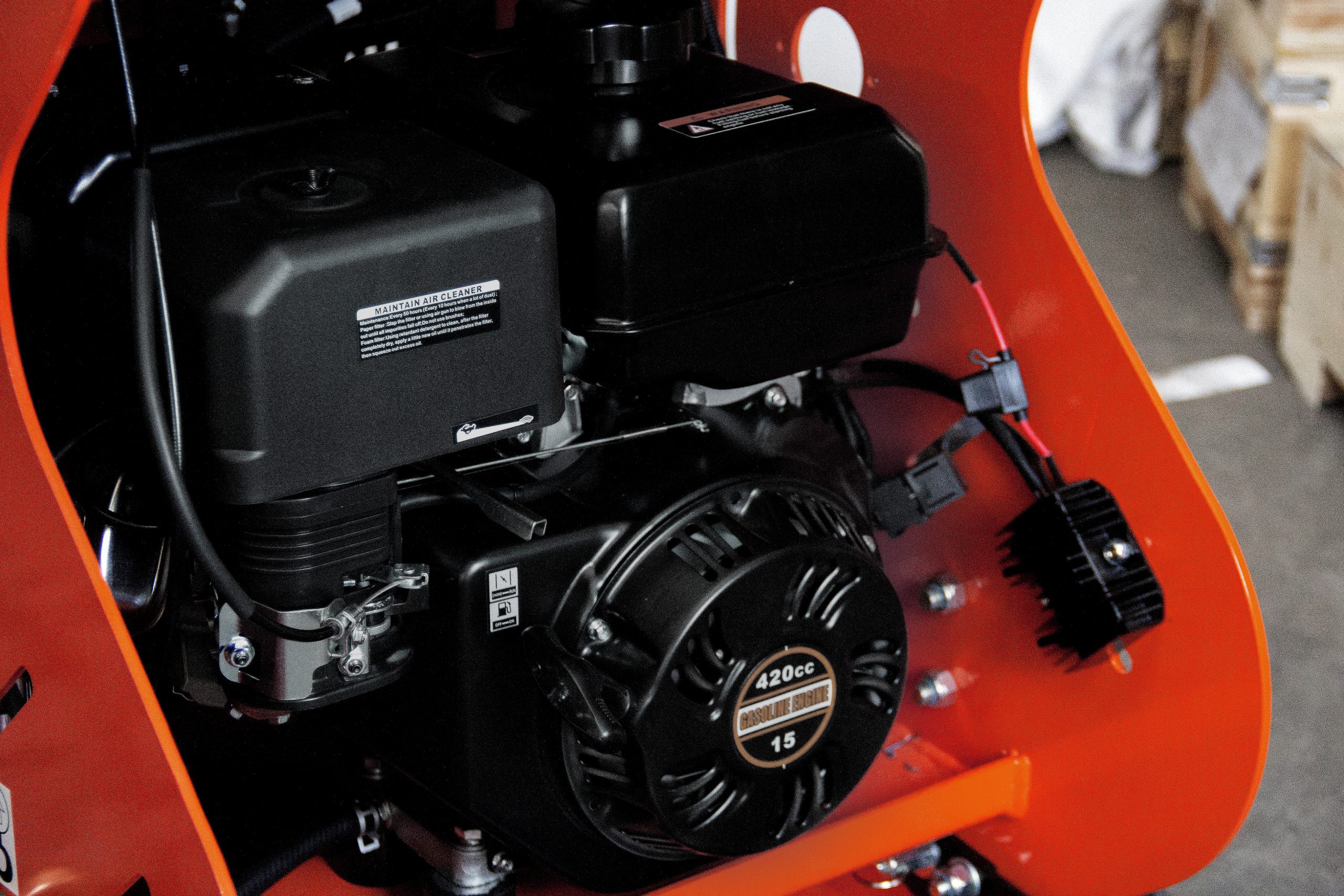
How long does it take to clear an acre with a mini track loader?
You can clear an acre in about 4 to 8 hours, depending on brush thickness and terrain. If you use the right attachment and plan your work, you finish faster. Take breaks and check your progress often.
What size brush can a mini track loader handle?
Most brush cutters slice through grass, weeds, and saplings up to 2 inches thick. Mulcher attachments grind small trees up to 8 inches. Always check your attachment’s manual for exact limits.
Do I need special training to use a mini track loader?
You do not need a license, but you should read the manual and practice before starting. Many people learn in a few hours. Watch safety videos and ask for help if you feel unsure.
Can I use a mini track loader on wet or muddy ground?
Yes, you can. The tracks spread out the weight, so you do not sink or leave deep ruts. Move slowly and watch for soft spots. If you get stuck, back up and try a different path.
What maintenance does my mini track loader need after clearing brush?
Clean the loader and attachments.
Check for damage or loose parts.
Grease moving joints.
Inspect the tracks and hydraulic lines.
Store your machine in a dry place.
Regular care keeps your loader running strong.

